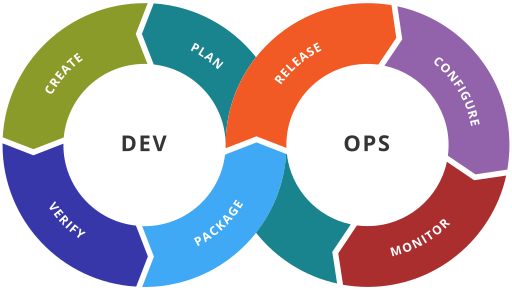-
 A tool that weigh the soul of incoming HTTP requests using proof-of-work to stop AI crawler. A beautiful idea againsta AI crazy bots
A tool that weigh the soul of incoming HTTP requests using proof-of-work to stop AI crawler. A beautiful idea againsta AI crazy bots -

Good Karma Kit
The Good Karma Kit is “a Docker Compose project to run on servers with spare CPU, disk, and bandwidth.” I like the idea in principle, but it is always a complex thing to do, because if you host unknown content, you can get in trouble easily (like pirated content or worst…)
Read More -

Sometimes you need to create a lot of CronJobs in k8s. In particular, in my last project I need to create a lot of stupid “web hooks” to fire complex job execution. K8s is well suited for this task because it take care of launching a single job instance, and relaunch them in case of error.
Read More -

Context: Spring microservice application to be deployed on K8s via helm + boring Friday
In this scenario, you end up writing the SAME configuration string in a lot of places:
- On at least 2 application.properties (main and test)
- On the final, helm-generated application properties (or in the relevant environment variable if you use them in place (1))
- On the default K8s values.yaml used by helm. Possibly on other yaml file too, all documented a bit to be kindly with the K8s SRE.
- On the relevant Java code, as a @Value annotation to finally use that damn config.
Read More -

K8s and limits
On K8s, for every pod you can define how much memory and CPU the pod needs. To make things "simpler", K8s define two set of values: requests and limits, both for CPU and memory. After some trouble on GCP, I was forced to dig a bit in the subject.
Read More -

A friend of mine asked some insight on how to harden a Gitea server on Internet. Gitea is a web application for manging git repositories.
Read More -

Bullet points:
- 1979: Unix V7 Introduced the chroot command to isolate the filesystem a process "access" to.
- Various technology was introduced up to 2006, like Virtuozzo (which patched Linux in a proprietary ways)
- 2006: Process Containers Launched by Google in 2006 was designed for limiting, accounting and isolating resource usage (CPU, memory, disk I/O, network) of a collection of processes. It was renamed “Control Groups (cgroups)” a year later and eventually merged to Linux kernel 2.6.24.
- 2008: LXC LXC (LinuX Containers) was the first, most complete implementation of Linux container manager. It was implemented in 2008 using cgroups and Linux namespaces, and it works on a single Linux kernel without requiring any patches.
- 2013: Docker Docker used LXC in its initial stages and later replaced that container manager with its own library, libcontainer. Docker offered a way to configure and manage containers, i.e a standard de-facto for this technology. As you see Docker was based on cgroups and LXC, seven-years old technologies
- On September 2014 Google published the first release of Kubernetes
- In 2015 Docker, CoreOS and others founded the Open Container Initiative's (OCI). K8s does not need docker anymore to work, but Docker traction is still strong.
References:
Read More -

NILFS is a log-structured file system supporting versioning of the entire file system and continuous snapshotting, which allows users to even restore files mistakenly overwritten or destroyed just a few seconds ago.
Discussion on Hacker NewsNILFS was developed by NTT Laboratories and published as an open-source software under GPL license, and now available as a part of Linux kernel.
Read More